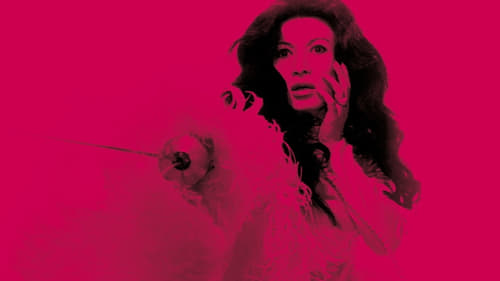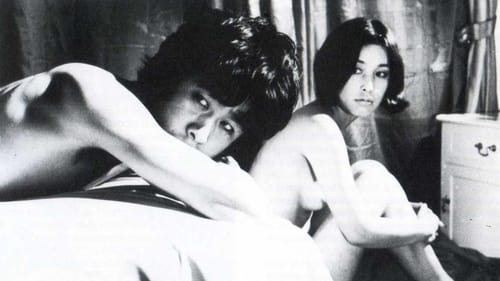Tadanori Yokoo
Nacimiento : 1936-06-27, Nishiwaki, Hyogo Prefecture, Japan

Self
ANPO: Art X War tells the story of Japan's historic resistance to U.S. military bases in Japan through an electrifying array of artwork created by Japan's foremost artists. The film articulates the insidious, lasting impact that the U.S. military presence has had on Japanese lives, and the creative processes that artists have devised to transmit the spirit of resistance.

Himself
A legendary entertainer and a pioneer of gay activism, Miwa was born Akihiro Maruyama. As a young singer, Miwa popularized androgyny as a fashion statement, fusing the masculine and the feminine into a signal of a new generation of aesthetics. This evolved into performing as a woman and living off-stage as a man. With glitter, wit, evening gowns, and enchanting storytelling, Miwa looks back over a 50-year career and a fascinating life in music, film and television.

Himself
A documentary on sixties counterculture in Japan featuring Donald Richie, Tadanori Yokoo, Masao Adachi, Koji Wakamatsu, Toshio Matsumoto and Akaji Maro among others.

Arakawa
Based on the comic Red Colored Elegy by Seiichi Hayashi

Natsuo (segment "Kyoko's House")
Producida por Coppola y Lucas, "Mishima" es un retrato biográfico del consagrado autor japonés Yukio Mishima. La película investiga la inquietud interior y las contradicciones de un hombre que trató de alcanzar una imposible armonía entre sí mismo, el arte y la sociedad. La trama se centra en el día en que Mishima conmocionó al mundo, al hacerse en público el seppuku o harakiri (25 de noviembre de 1970), en el Cuartel General del Ejército. El relato está salpicado de flashbacks para contar diversos episodios de su infancia, sus comienzos como escritor, el posterior triunfo profesional, su tranformación en estrella mediática, sus obsesiones por la belleza física y sus ambiguos gustos sexuales, así como la creación de la "Sociedad del Escudo". (FILMAFFINITY)

Art Direction
A documentary profiling a Japanese taiko drumming group based in the remote Sado Island, Japan. The film blurs the line between real-life documentary footage of the troupe's training and practice regimes, and staged performances of their varied musical acts, with sets designed by artist Tadanori Yokoo and an additional experimental electronic music score by Toshi Ichiyanagi.

Art Direction
Experimental film by Toshio Matsumoto created for the 1970 world's fair, Expo '70 in Osaka. The film was made up of multiple projections onto the inside of the Textile Pavilion, a dome with an interior designed by Yokoo Tadanori, and featured a 57-channel music score by Joji Yuasa.

Torio Okanoue
Birdie, un joven ladrón de libros, es sorprendido mientras roba por una supuesta dependienta llamada Umeko, que lo lleva en presencia del dueño de la librería. La noche siguiente los dos jóvenes hacen el amor, pero Umeko, que es virgen, se queda desilusionada. A partir de ahí inician la búsqueda del placer sexual y para ello recurren a un sexólogo, mientras un grupo de actores debaten sobre las claves del placer. El film, que empieza en blanco y negro, mezcla arrebatos de color, música popular, sexo, psicoanálisis y surrealismo.

Director
Tadanori Yooko superb animation.

Hi-Red Centre were comprised of Genpei Akasegawa, Natsuyuki Nakanishi and Jiro Takamatsu, who enacted ‘happening’-style performance art in unusual spaces during the early 1960s in Japan. The film is an extremely rare document of one of their early events, where they hired out a room in the Imperial Hotel and invited many friends and professionals in the art scene to participate in the occasion. The performance parodies Cold War fears and the construction of private bomb-shelters, as they diligently measure each guest’s weight and proportions in pretence that they are to build human-size shelters for each individual. Key figures of the art scene make an appearance, including Yoko Ono, video-artist Nam June Paik, noise artist Yasunao Tone, filmmaker Masao Adachi and graphic designer Tadanori Yokoo. A rarely seen and exceptional insight into the Japanese art scene of the era, Jonouchi records the event in his characteristically erratic style.

Editor
Yooko short animation.

Cinematography
Yooko short animation.

Writer
Yooko short animation.

Director
Yooko short animation.

Writer
Animation by Tadanori Yokoo.

Director
Animation by Tadanori Yokoo.







